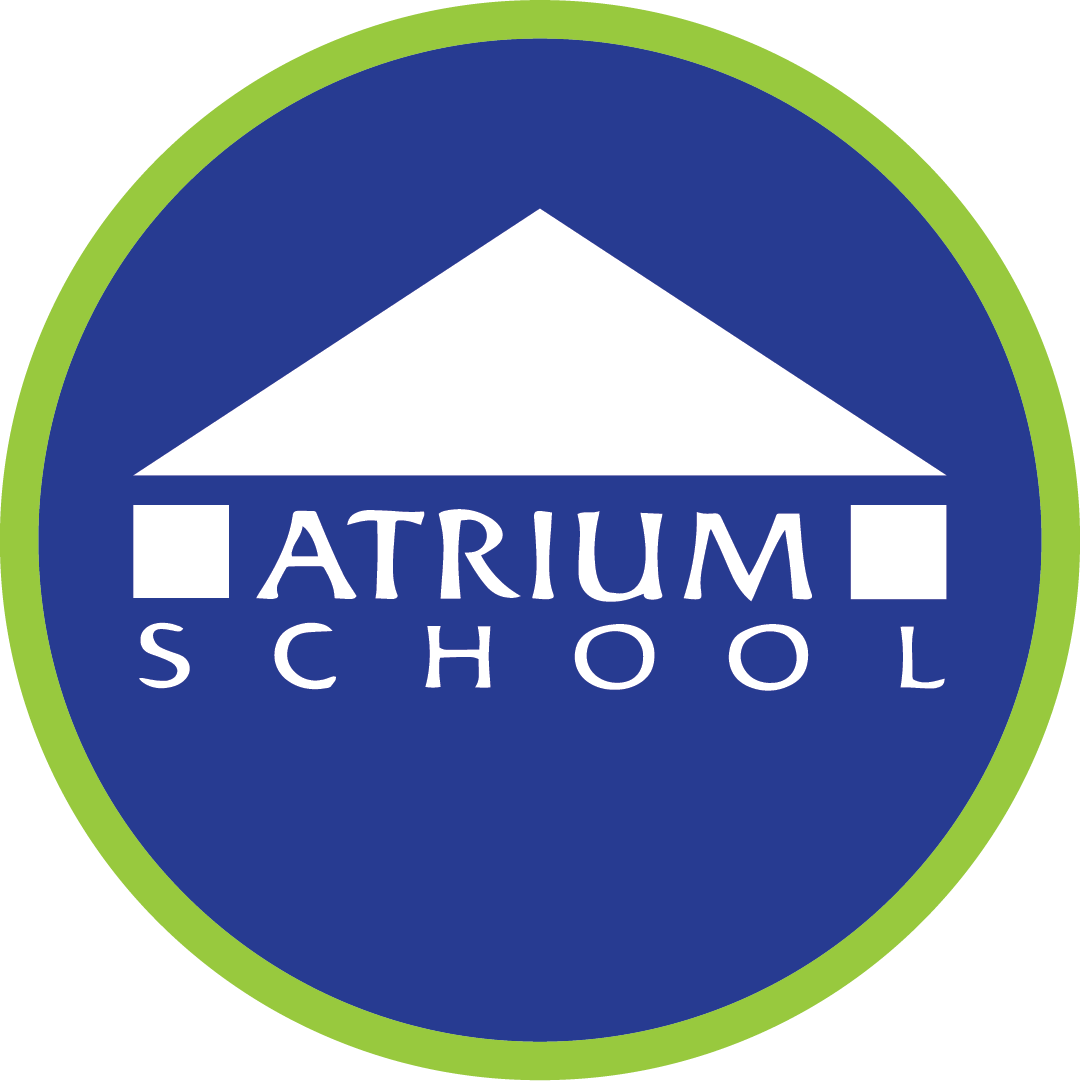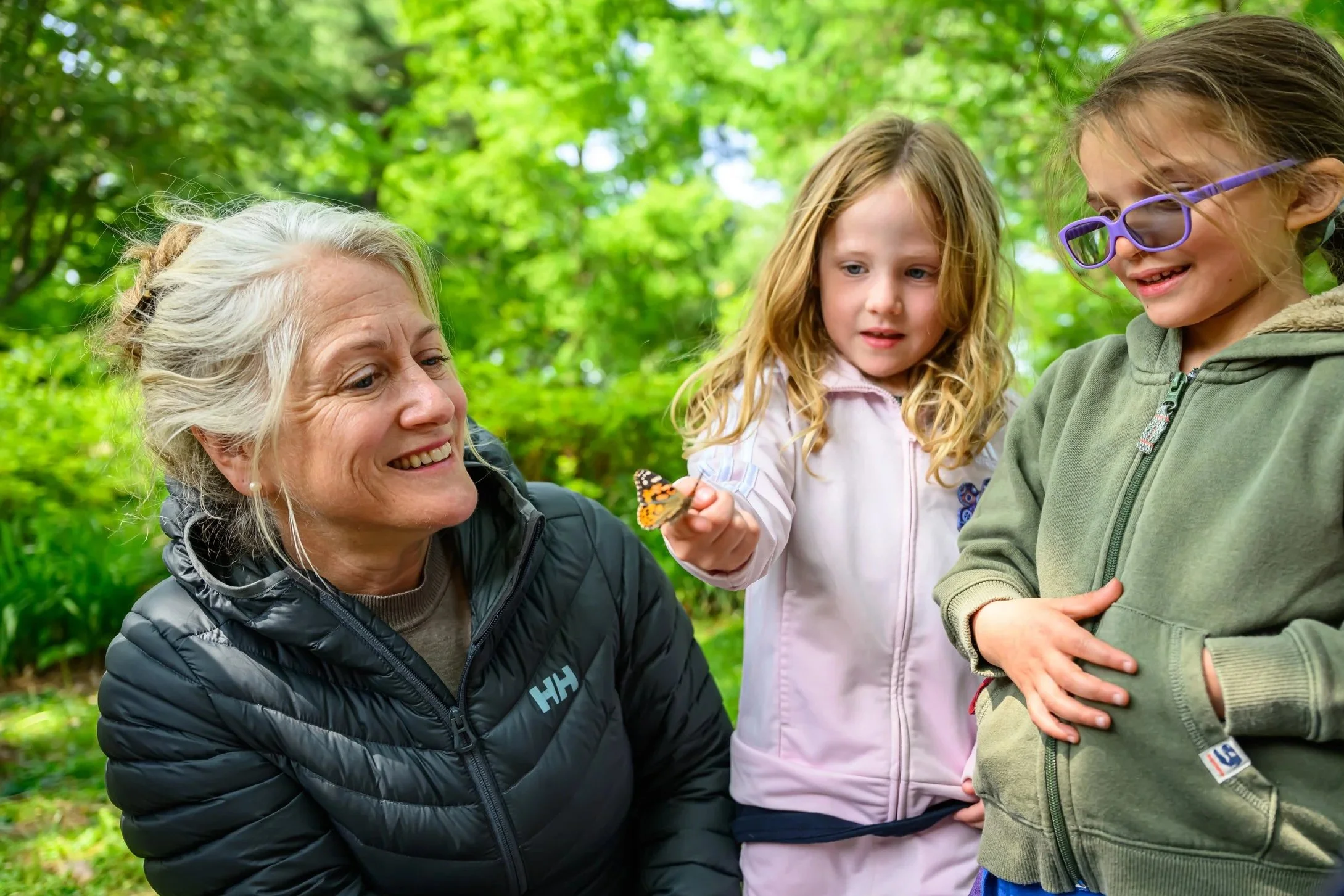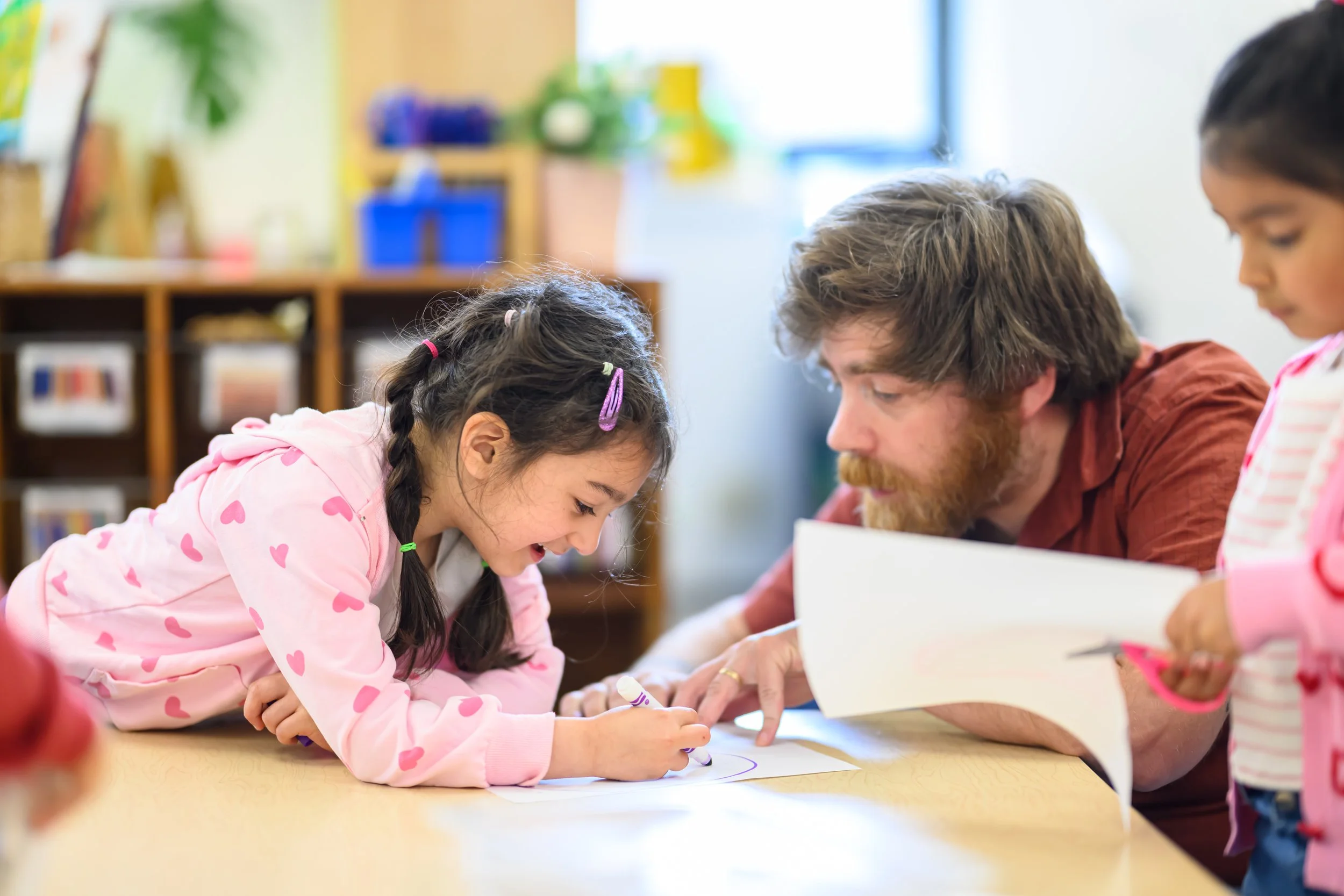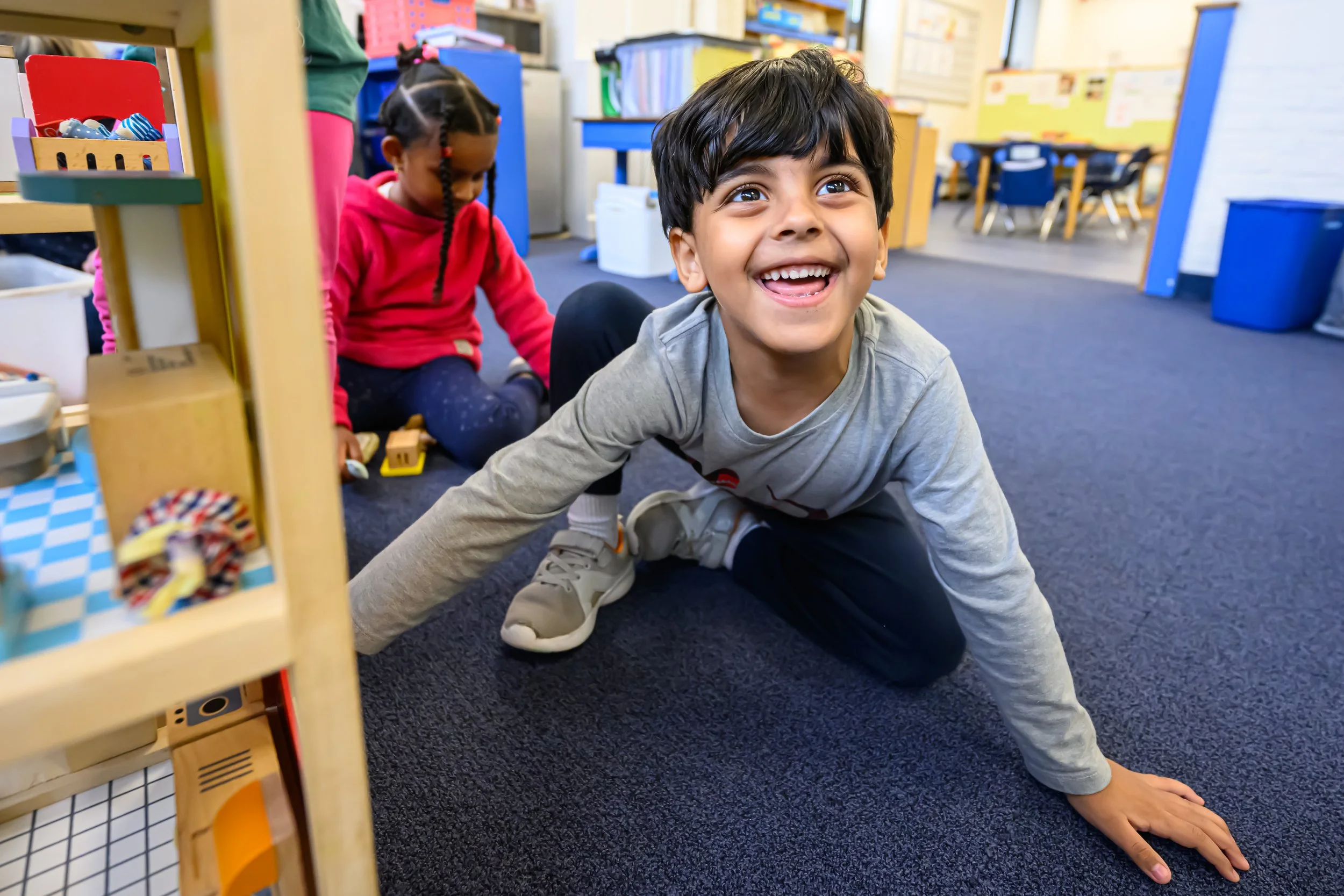PreKindergarten
The youngest students at Atrium are eased into the academic atmosphere through many daily activities that incorporate emergent literacy skills, music, movement, games, writing, coloring, dramatic play, and social interaction. The focus of our PreKindergarten is to promote a love of learning, foster social and emotional development, and help children develop a strong sense of community with their peers, their teachers, and the school community. Curriculum is child-centered: lessons are directed by children’s developmental levels, interests, and individual needs, while also challenging the whole child. The children learn how to work together and individually; they have social and learning opportunities with a partner class of older children; and teachers encourage and challenge them to explore their own creativity and individuality on a daily basis. PreKindergarten is a wonderful year for the children to learn about themselves, each other, and how to be a part of a learning community.
PreKindergarten Theme: "What Is Change?"
Thematic study is a way of focusing all aspects of children’s education at Atrium into a central idea. This interdisciplinary focus allows all kinds of learners to develop skills and experience success in their academic lives. Throughout the year, students have opportunities to share their work with their community and make connections between their learning and the world around them.
Our overall theme in PreK is organized around the big question, “What Is Change?” We explore the changes in ourselves, our community, and the environment around us. Change can be defined as becoming different in some particular way, without permanently losing certain characteristics or essence. For example, we learn that although we may grow taller or lose a tooth, we are essentially still the same person. Even though the trees and leaves change, they are still in fact trees and leaves. Change is an important concept to study and understand, as PreK students are diligent observers of their environment and often ask the question “Why?” The goal of our theme is for the children to continually reflect on themselves and their environment, to notice what has been modified or altered, and to gain an understanding of why these changes occurred. This allows children to begin noticing similarities and differences and to be active participants in the world. Because of the broadness of this wonderful overarching question, it provides numerous entry points across curricular contexts, such as science, mathematics, social/emotional growth, nature and the environment, and, of course, the children themselves!
Classroom Structure
Literacy
Literacy centers are incorporated into a number of activities that take the children’s interests and developmental levels into consideration. Individualization is central to instruction, with children working on different tasks according to where they may be with regard to their pre-literacy development and their grasp of various concepts of print. Each center activity can be modified to accommodate each child so that they can find success as well as challenge. Many of the activities allow children to count, measure, compute, at the same time that drawing and writing take place. Utilizing all areas of the classroom allows every child to find an activity that is appealing to him or her, and also encourages new interests. Through a variety of engaging activities that are open daily, children are encouraged to draw, to write, to explore print, to listen to stories read aloud, to take risks, and to enhance their pre-literacy skills. Invented spelling is encouraged so that children develop confidence in their writing skills and learn to take risks. Invented spelling also encourages young children's attempts to use their best judgments about spelling.
Mathematics
We use the Building Blocks math curriculum, which is a program designed to teach mathematical concepts to this age group throughout a variety of multi-modal activities, games, and lessons. During Math Groups each week, we have a balance of instruction that takes place in both large and small groups. Together as a whole group, we practice a variety of math concepts, learn a math game together, read a math story, or are introduced to a new poem related to what we are studying at the time. Small group times are intimate and interactive, and can be modified for differentiated instruction. The math centers give children concrete experiences with math concepts. Building Block activities are carefully designed and sequenced to address each level of the learning trajectories in the following areas of mathematics: number, measuring, patterning and early algebra, classifying and analyzing data, and geometry.
Large Group Exploration
During Large Group Exploration the class participates in a variety of activities, based on the day, the needs of the children, and the children’s interests. Sometimes we use Large Group Exploration as a time to explore movement by learning a new song with gestures, or by having a dance party. It is sometimes important to take a break from sitting and working and just move! These times give us the opportunity to express ourselves through movement, to use props (such as scarves and beanbags), to listen to different types of music, and to engage in activities to improve strength, flexibility, and imagination. Sometimes we use the time for shared reading. This is a teacher-directed read-aloud that involves predictable and/or repetitive books. Using the same books in consecutive shared reading lessons is a powerful tool for learning and promoting emergent reading skills. Other days this is a time for sharing, when children will have the opportunity to share a story, a piece of artwork, or a structure that they made during the day. It may also be a time to explore our theme together as a class by engaging in a fun science experiment related to “What Is Change?”
Science
Our theme, “What Is Change?” provides numerous rich entry points for thinking and learning related to science. We study changes all around us in our environment, such as noticing the seasonal changes as the leaves turn colors in the fall and drop to the ground and the hours of daylight become fewer. Each child selects a tree outside as a concrete visual representation of change, and they notice and document observations about the changes that occur to “their” tree throughout the entire year and throughout the turning of the seasons. Our classroom also has a painted tree on the wall that serves as a visual tool for observing and documenting the many changes in our environment.
Our science table is full of natural materials and magnifying glasses for children to practice their observation and inquiry skills, and to engage with and further explore the natural world. Because change is a theme that relates to many science topics, we also study life cycles of various animals – including ourselves – as we record the children’s own growth on a “Growth Chart” that hangs on a door in the classroom.
Choice Time/Theme
Each afternoon, there is Choice Time. During this time each day, children have the opportunity to use their creativity to extend their own learning and to delve deeper into our theme of “What Is Change?” Many different choices, in all areas of the room, are open for children to explore and play in. During choice time, children always have the opportunity to decide what to pick based on what is interesting to them, which affords them the rich sense of empowerment as they self-navigate in the classroom. It provides yet another time for them to negotiate, problem solve, socialize, and have fun.






